How to Grow Celery: A Gardener’s Guide to Crisp, Flavorful Stalks
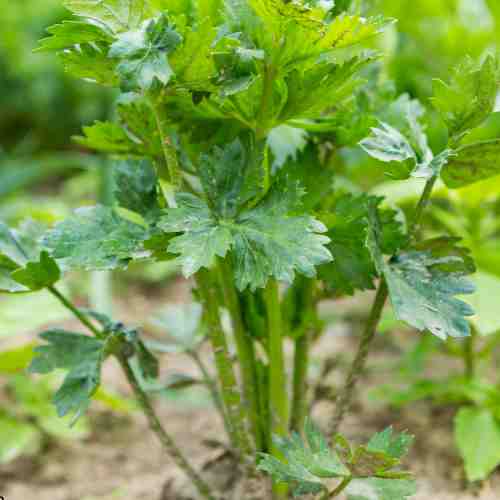
Celery is a cool-season crop known for its crisp texture and refreshing taste. While it’s often considered tricky to grow, with the right timing and care, you can enjoy homegrown celery that’s far superior to store-bought varieties.
In this guide, we’ll cover everything you need to know, from choosing the best variety to planting, caring, and harvesting celery for a successful crop.
Get our Gardening Buddy and find veggies that fit your conditions best.
You Can Grow It!
Why Grow Celery?
Celery is a slow-growing vegetable, but the effort is worth it. Homegrown celery has a stronger flavor, crunchier texture, and more nutrients than what you’ll find in the grocery store.
Benefits of Growing Celery
✅ Healthier & Tastier: Freshly harvested celery is sweeter and more aromatic.
✅ Continuous Harvest: Pick stalks as needed instead of harvesting the entire plant.
✅ Perfect for Small Gardens: Can be grown in containers or raised beds.
✅ Cool-Weather Friendly: Grows well in spring and fall.
Let’s dive into the best ways to grow celery successfully.
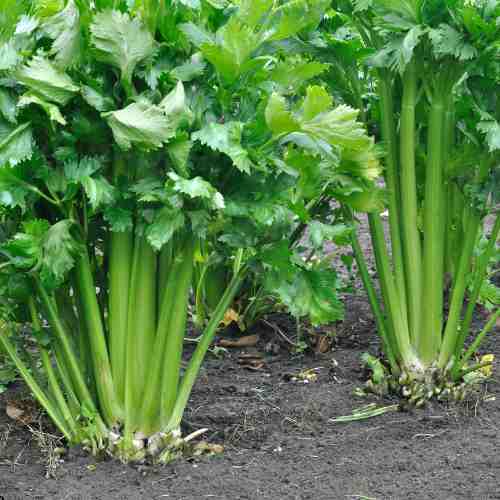
Choosing the Right Celery Variety
There are different types of celery, each with unique growing requirements.
1. Traditional Stalk Celery (Perfect for crisp stalks & fresh eating)
- ‘Tango’ – Fast-growing, tender, and disease-resistant.
- ‘Utah 52-70’ – Classic green celery with firm, thick stalks.
2. Cutting Celery (Great for flavor & easy maintenance)
- ‘Par-Cel’ – A leafy celery variety, great for garnishes and soups.
- ‘Afina’ – Grows more like an herb, perfect for cutting and regrowing.
3. Self-Blanching Celery (Easier to grow, less maintenance)
- ‘Golden Self-Blanching’ – Naturally tender stalks that require less sunlight exposure.
🌱 Tip: If you’re a beginner, try ‘Tango’ or ‘Utah 52-70’, as they are more forgiving for first-time growers.
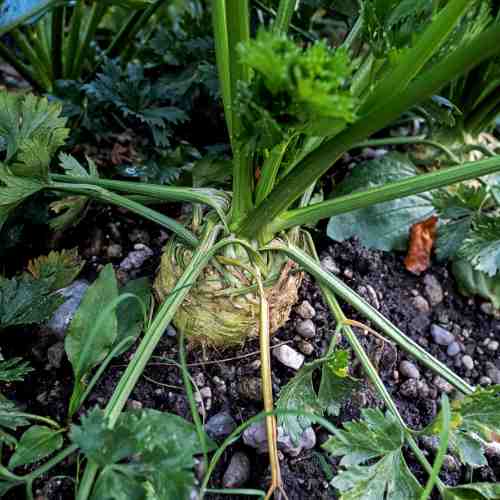
When to Plant Celery
Celery is a cool-season crop that takes up to 140 days to mature, so timing is important.
Spring Planting (Best for Most Regions)
- Start seeds indoors 10–12 weeks before the last frost.
- Transplant outdoors after the last frost, when soil temperatures are at least 50°F (10°C).
Fall Planting (For Warmer Climates)
- Start seeds indoors in late summer.
- Transplant outdoors 8–10 weeks before the first frost.
🌱 Pro Tip: Celery hates extreme heat—if summer temperatures rise above 75°F (24°C), provide shade to prevent bolting.
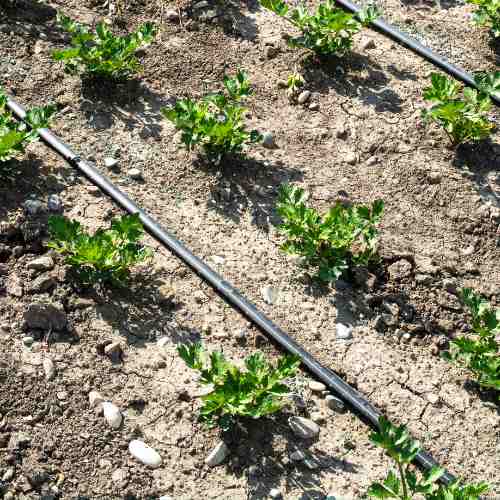
How to Plant Celery
1. Start Seeds Indoors (Celery has a long growing season, so direct sowing is not recommended.)
- Soak seeds overnight in warm water to speed up germination.
- Plant seeds ¼ inch deep in seed trays.
- Keep soil moist and warm (70–75°F/21–24°C) for germination.
2. Transplanting to the Garden
- When seedlings are 4–6 inches tall, harden them off before planting outdoors.
- Space plants 6–8 inches apart in rows 12 inches apart.
🚿 Water well after transplanting to help roots establish.
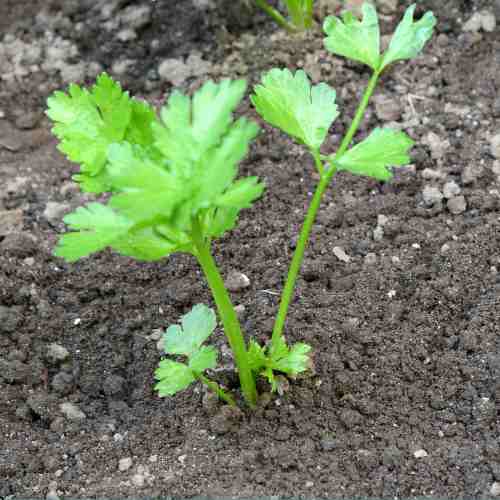
Caring for Celery
Celery needs consistent care for the best growth.
1. Watering
- Celery is 95% water, so it needs regular watering to keep stalks tender.
- Water 1–1.5 inches per week, ensuring the soil stays evenly moist.
- Mulch around plants to retain moisture and regulate soil temperature.
2. Fertilizing
- Celery is a heavy feeder—apply a balanced fertilizer every 2–3 weeks.
- Side-dress with compost or aged manure for extra nutrients.
3. Blanching for Tender Stalks
- If growing traditional green celery, wrap stalks with newspaper or cardboard to reduce bitterness and produce mild, tender celery.
- Self-blanching varieties don’t require this step!
4. Protecting Against Pests and Diseases
🐛 Common Pests:
- Aphids – Spray with neem oil or introduce ladybugs.
- Slugs & Snails – Use diatomaceous earth around plants.
- Carrot Rust Flies – Cover plants with floating row covers.
🚫 Disease Prevention:
- Rotate celery crops yearly to prevent soil-borne diseases.
- Avoid overcrowding to reduce fungal issues like leaf spot and blight.
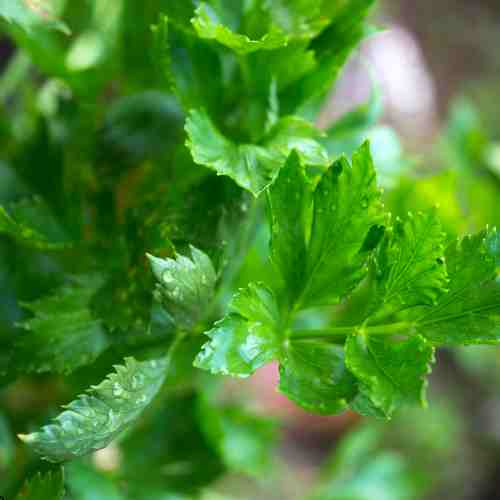
When and How to Harvest Celery
Celery is ready for harvest in 85–140 days, depending on the variety.
1. Harvesting Individual Stalks (Best for continuous harvests)
- Cut outer stalks first, leaving the inner core intact for continued growth.
- Pick stalks when they reach 8–12 inches tall.
2. Harvesting the Whole Plant
- If harvesting the entire celery plant, cut at the base with a sharp knife.
- Harvest before hot weather or frost, which can make stalks tough or bitter.
🌱 Pro Tip: Celery harvested after a light frost develops a sweeter taste!
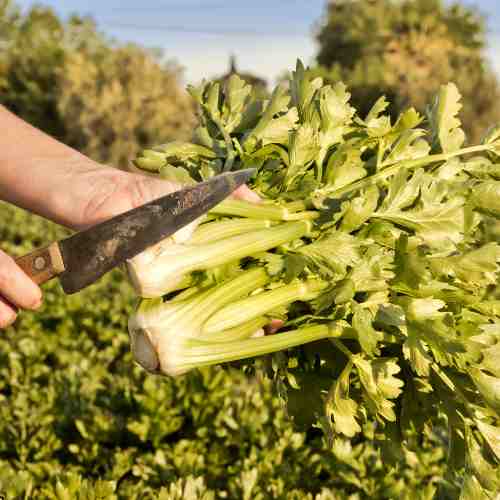
Storing and Using Celery
🥬 Storage Tips:
- Wrap celery in a damp paper towel and store in the fridge for 2–3 weeks.
- To keep celery crisp, store stalks in a jar of water in the fridge.
- For long-term storage, chop and freeze celery for use in soups and stews.
🍽️ How to Use Homegrown Celery:
- Eat fresh with hummus or peanut butter.
- Add to soups, stews, and stir-fries.
- Use the leaves in salads, stocks, or pesto.
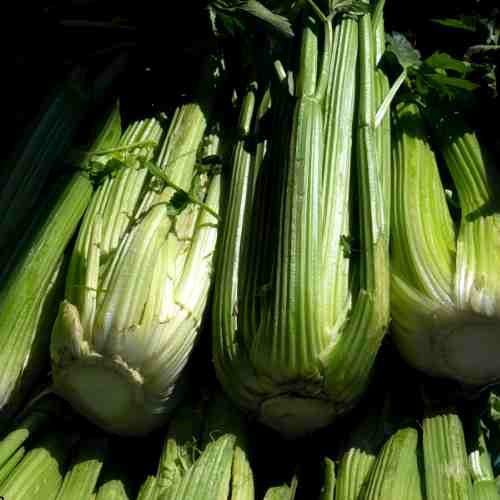
FAQs About Growing Celery
How long does celery take to grow?
Celery takes 85–140 days to mature, depending on the variety.
Can I grow celery in containers?
Yes! Use a deep container (at least 12 inches) and keep soil consistently moist.
Does celery need full sun?
Yes, celery prefers 6+ hours of sunlight daily, but benefits from light afternoon shade in hot climates.
How often should I water celery?
Celery needs 1–1.5 inches of water per week—dry conditions cause tough stalks.
Can I regrow celery from scraps?
Yes! Place the cut base of a celery stalk in water, and new shoots will appear.
What causes celery stalks to be tough and bitter?
- Underwatering
- Extreme heat
- Lack of nutrients
Should I fertilize celery?
Yes! Feed every 2–3 weeks with compost or liquid fertilizer.
What pests attack celery?
Aphids, slugs, and carrot rust flies—use neem oil or row covers to protect plants.
Can celery survive frost?
Celery tolerates light frost but needs protection from hard freezes.
How do I store fresh celery?
Wrap in a damp paper towel and keep in the fridge for up to 3 weeks.
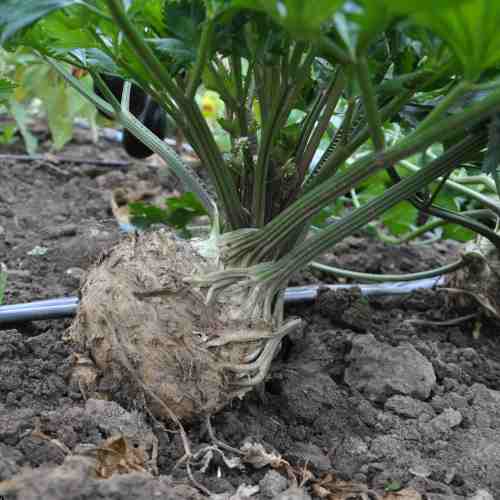
Final Tips for a Successful Celery Harvest
✅ Start early – Celery needs 10–12 weeks indoors before transplanting.
✅ Water consistently – Dry conditions cause bitter, tough stalks.
✅ Mulch well – Helps retain moisture and prevent weeds.
✅ Feed regularly – Celery is a heavy feeder—use compost or balanced fertilizer.
✅ Blanch for tenderness – If growing green celery, wrap stalks for milder flavor.
Growing celery takes patience, but the reward is fresh, flavorful stalks that beat anything from the store!
Get our Gardening Buddy and find veggies that fit your conditions best.
You Can Grow It!
Partners and Sponsors
We are forever grateful to our partners and sponsors. Send an email to team @ strongecho.com and let’s see how we can grow each other’s impact!





